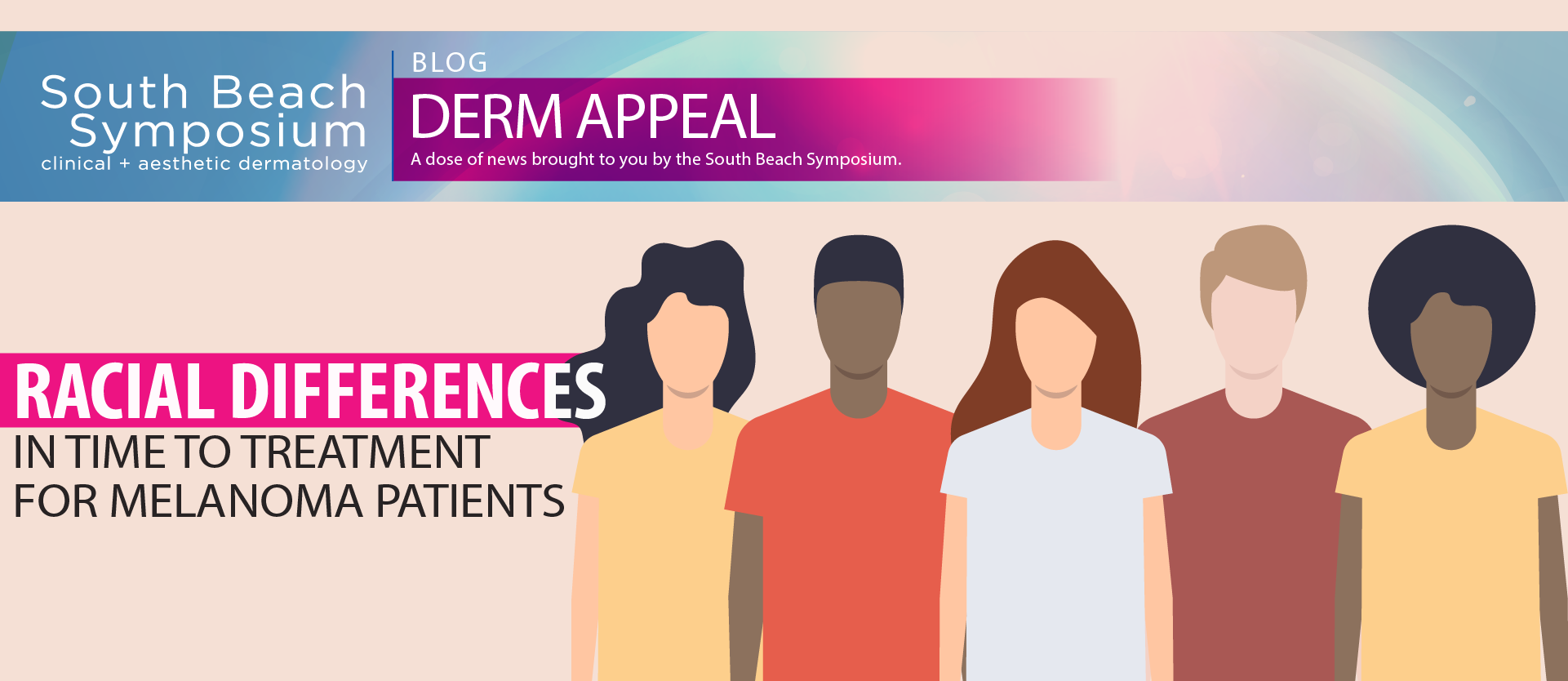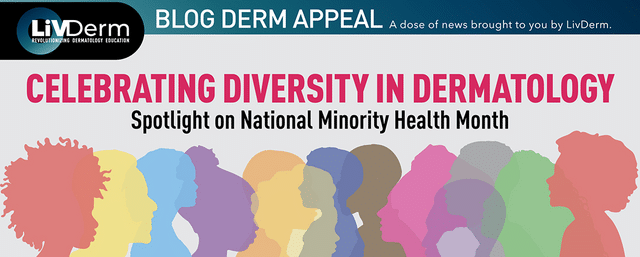The incidence of cutaneous melanoma continues to rise as an estimated 2.3% of Americans are diagnosed with the disease per year. Research has shown that the frequency of dermatology visits can reduce adverse events, mortality, and unnecessary hospitalizations for melanoma patients. Time of detection and time to treatment are essential factors in guaranteeing the best health outcomes in patients with melanoma. A longer time from diagnosis to definitive surgery (TTDS) is associated with increased mortality rates. However, there are significant disparities in access to and use of dermatologic services for melanoma patients based on both clinical and sociodemographic factors.
African American patients typically present with later stage melanoma and have worse survival rates than non-Hispanic white patients, however, the correlation between race and TTDS has been largely unexplored. A recent study published in the Journal of the American Academy of Dermatology evaluated differences in time to treatment experienced by patients depending on race.
Racial Differences in TTDS
Led by Raghav Tripathi, MPH, a team of researchers at Case Western Reserve University School of Medicine in Cleveland conducted a retrospective review of data from the National Cancer Database to investigate upwards of 233,000 melanoma patients. Of the 233,982 study participants, 1,221 or 0.52% were African American and 99.5% were non-Hispanic white. The study’s authors used multivariable logistic regression models to control for sociodemographic variables and disease characteristics.
Researchers found that patients in this racial group had longer times from diagnosis to definitive surgery for stage I-III melanoma as well as time to immunotherapy. Although, TTDS for stage IV melanoma and time to chemotherapy remained the same between racial groups.
After controlling for sociodemographic factors, African American patients experienced over double the likelihood of having TTDS between 41 and 60 days, over three times the odds of TTDS being 61 to 90 days, and over five times the chances of having TTDS above 90 days. In addition, the research team found that racial differences in TTDS persisted regardless of type of health insurance, however, Medicaid beneficiaries experienced the longest TTDS (mean of 60.4 days) while patients with private insurance had the shortest TTDS with a mean of 44.6 days.
Implications of Increased TTDS
“We already knew that black patients with melanoma have a worse prognosis and that longer time to treatment is associated with worse survival, but we didn’t fully understand the relationship between race and time to treatment after controlling for various other factors,” first author Raghav Tripathi explained in a press release. “A more thorough understanding of the factors associated with worse outcomes for black patients is critical in reducing racial disparities in melanoma outcomes.”
According to investigators, the increased TTDS evidenced in African American patients may partly result from differences in melanoma characteristics – such as an increased prevalence of aural lentiginous melanoma on lower extremities and increased Breslow depth and stage at time of diagnosis for other melanoma types, all of which forecast poorer outcomes. Furthermore, research has shown that African American patients are statistically less likely to receive immunotherapy for metastatic melanoma as well as other cancer subtypes in addition to various unfavorable socioeconomic factors that exacerbate differences in healthcare utilization.
Although Tripathi and colleagues concluded that the exact causes underlying the association between increased TTDS and race are not yet known, the authors emphasize the need to further investigate and better understand the factors contributing to poorer outcomes in African American melanoma patients.
“Ultimately, we hope this study will draw attention to the importance of further understanding the various components of TTDS and worse outcomes for black melanoma patients,” Tripathi explained while highlighting the need for targeted interventions aimed at improving health outcomes within this demographic. “Additionally, this study suggests that targeted approaches to improve TTDS for black melanoma patients are integral in reducing racial disparities in melanoma outcomes.”
















